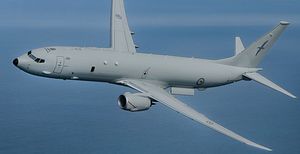The government of New Zealand has released milestone estimates on June 12 for the procurement of four U.S.-made Boeing P-8A Poseidon maritime patrol aircraft into service with the Royal New Zealand Air Force (RNZAF).
A factsheet released last week states that delivery of the first P-8A to the RNZAF is expected by April 2023 with initial operating capability achieved by July of the same year. The entire fleet of four aircraft is slated to reach final operating capability by 2025.
Additionally, infrastructure work on the ground to accommodate the aircraft will begin in October 2019, while instructor staff training will begin in the United States in February 2020.
Aircrew and maintenance training will begin in the first quarter of 2022, while work a mobile tactical operations center as well as a P-8A flight simulator will be handed over to the RNZAF in 2023.
“Last year the Coalition Government decided to buy four P-8A Poseidon aircraft,” New Zealand Defense Minister, Ron Mark, said in remarks at a RNZAF base on June 12 on the occasion of the release of the project time line. “The P-8s are a once in a generation purchase, and will ensure that the Air Force’s crucial maritime patrol capability is maintained for decades to come.”
The four aircraft will replace the RNZAF’s current fleet of six P-3K2 Orion maritime patrol aircraft under the service’s so-called Future Air Surveillance Capability project by 2025.
The U.S. State Department approved the sale of four P-8As to New Zealand in April 2017 for an estimated $1.46 billion. The New Zealand Ministry of Defense (MoD) estimates total cost including “training systems, infrastructure and introduction into service costs” at around $1.6 billion.
The P-8A is the military variant of Boeing’s Next-Generation 737-800 commercial aircraft and was originally designed to replace the United States Navy’s fleet of P-3 Orion aircraft.
“The P-8A, equipped with fitted with advanced sensors, including an APY-10 radar system, can carry several types of bombs, Raytheon Mark 54 lightweight torpedoes, mines, depth charges and can also launch air-to-surface missiles installed on the underwing hardpoints,” I noted last year.
The New Zealand government also announced that a project to deliver an Enhanced Maritime Awareness Capability is also underway. Notably, the P-8A has the capability to control a number of unmanned aerial vehicles (UAVs) to extend sensor reach.
“This complementary capability will consider smaller manned aircraft, Remotely Piloted Aircraft Systems (RPAS) or satellites, for additional maritime surveillance tasks within New Zealand’s Exclusive Economic Zone and the wider region,” according to the statement. “This will free up the P-8s to fly more missions, in the South Pacific and further afield.”
New Zealand patrols a vast Pacific Ocean zone that is larger than Europe.

































